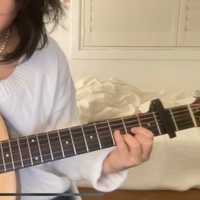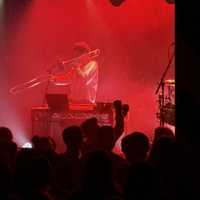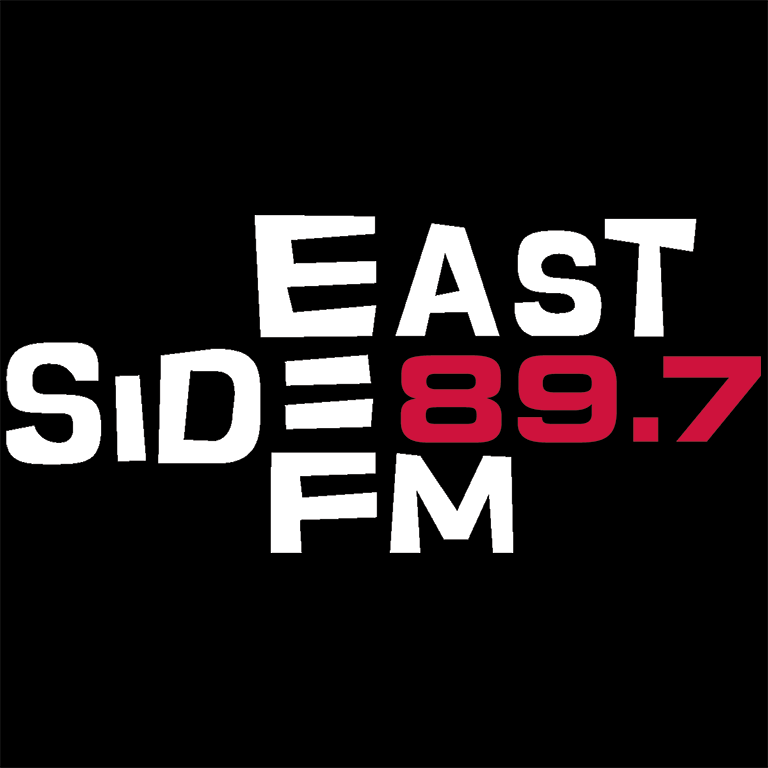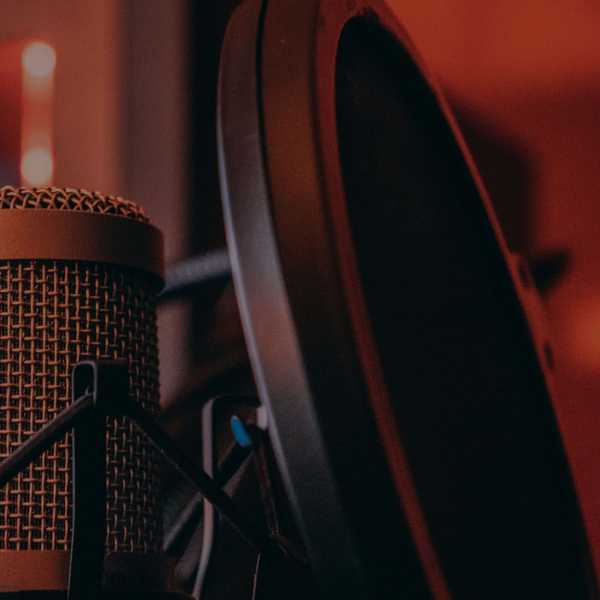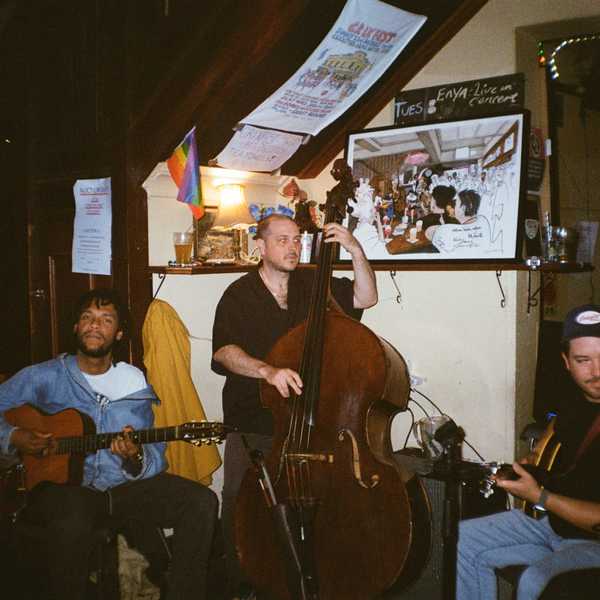Approx. 12 minute read
Artists have an inner drive to deliver their calling to the world and persuade others to appreciate the unique perspective or thing of beauty they surface, even when their pursuit is somewhat out of the ordinary or has never really been done before.
Rock ’n Roll did not exist before Sister Rosetta Tharpe; she just had it in her. When she picked up the guitar, she unchained it from its constraint as a perceived accompaniment instrument, turning it into an uninhibited creature that enthralled audiences and could only be tamed by her passion and dexterity on the instrument.
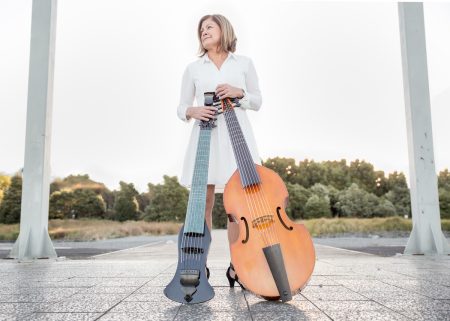
Jenny Eriksson is much like Sister Rosetta Tharpe, in that she is driven to bring her music and instrument, the viola da gamba, to new audiences and connect with them by keeping this age old instrument relevant in the 21st century and pushing it forward into genres such as jazz. Plus, Jenny’s gone electric too! Read on to learn more about Jenny’s fascinating viola da gamba story.
Sonia de Freitas: Hi Jenny, how are you? Where does our interview find you today?
Jenny Eriksson: I am great, thanks! I am just back from my daily run. I love my runs which give me time to reflect, process and plan the day ahead. This interview finds me in my studio preparing for a solo recital I am giving at a book launch next week. Music by the 17th century composers du Buisson and Abel, amongst others. This afternoon I will continue to work on a new piece written for The Marais Project by Australian composer, Gordon Kerry. We will be workshopping this piece in the coming weeks. Finally, the electric gamba will get a say as I look over the new score that Keyna Wilkins has written for my electric viola da gamba band, Elysian Fields. So, it is a varied day of old and new!
SdF: Can you tell me about your journey in music? When did you know that you were going to make music your career?
JE: I loved music from the first time I heard my school recorder band play at Warragamba Primary School believe it or not! I can’t tell you how much it was my dream to play in that band. My parents bought me a recorder when I was 6. I taught myself how to play in a day with the help of an older friend.
Rolling forward a few years, playing in ensembles at school had a profound affect on me. By the time I was in High School at Hornsby Girls, I was singing before school and at lunch time everyday and was a member of the school orchestra after school. I had piano lessons from the age of 7 and cello lessons from the age of 14. It wasn’t always clear that music would be my career. In my teenage years, I played a lot of representative sport which took away music practice time. I remember at the age of 17 making a very clear decision to take up music as a career. I could see that playing sport at a high level and playing music at a high level was not going to work. I also came to understand that you could have a career in music all your working life, but a career in sport was going to be much shorter. By the time I was 17 there was this incredible passion for music instilled in me and I just wanted to share it. I even convinced all my basketball team to join the school choir. They never missed a rehearsal.
SdF: You are a tireless advocate for the viola da gamba and have kept this period instrument alive and relevant in modern times by performing genres including Baroque, Contemporary Art music, Improvised music, and Jazz. I think it is so cool that you own an electric viola da gamba; I’m still trying to wrap my head around the concept of an electric Renaissance era instrument! Can you tell me about your creative process when producing work on your magnificent instrument?
JE: In my musical life I have never been complacent. I am always looking for ways to push the boundaries, to make my instrument relevant and heard. Whether that be playing obscure French Baroque music, commissioning new works, playing in school concerts for Musica Viva or the electric viola da gamba in a jazz group. I would never call myself a composer, but now I am playing an electric viola da gamba there is a need for repertoire and a calling for me to do some composing and arranging. I am always looking for new material. I practise each day but then I also explore each day. I love the time leading up to a concert when finally my musician friends are in the same room as me rehearsing, bringing to life a program that has been in the making for months, working out what works and what doesn’t and just adding those final touches. It is my hope that the concert is the climax of the creative process.
Music is also about reaching out to an audience and trying to communicate the best way you can – which is a never-ending process.
SdF: Who is your sounding board? There must be someone that you trust to give you brutally honest feedback on your music. How do they fit into the process?
JE: The Marais Project and Elysian Fields are very much collaborations where everyone has a chance to express their ideas. We have a deep respect for each other not only musically, but personally. I am gifted with an honest and supportive feedback team, starting with lute player Tommie Andersson. Tommie and I have been playing together for over 30 years. I have ideas and then I talk through with Tommie and together we make things happen. He suggests repertoire and has arranged so much music to make our dreams come alive in my early music ensemble, The Marais Project.
Cathy Upex has accompanied me on her viola da gamba for 20 years. I rely on her for technical and musical feedback. If I am having trouble with a passage she will make suggestions. She has amazing ears and has been invaluable in the recording studio. I have learnt a lot from her graciousness.
Llew Kiek has produced most of my CDs. Through recording, and his input, I believe he was helped my playing go somewhere special. He is so organised in the studio and has taught me how to use time well when recording.

Then there is the jazz team and the amazing musician, composer and producer, Matt Keegan and pianist/composer, Matt McMahon. To be honest, I am still finding my way in this world of jazz/improvised music. Matt Keegan is able to give very clear suggestions as to where my electric gamba group, Elysian Fields, could and should go. He is great at understanding and articulating our individual and collective strengths and what we should be aiming for. Matt McMahon is just like a steady rock that pulls everything together in Elysian Fields. He is also thoughtful and wise
But probably the most amazing sounding board has been my husband, Philip. He also trained as a musician but has not played for many years. Together we bounce around endless ideas (maybe over a glass of wine) and more often than not, we come up with a really good one! By good, I mean interesting artistically. We are yet to come up with a musical idea that makes money! I would say Philip is my most honest, but still supportive, critic.
SdF: Can you tell me about the relationship you have with your incredible instrument? Where did you first hear it? What does it mean to you? How has your relationship with it evolved over the years?

JE: The first time I heard the viola da gamba was in a performance of the Bach St John Passion at the Sydney conservatorium with Richard Gill conducting. The theological and emotional climax of the passion is an aria, called Es ist Vollbracht, literally, “it is finished”. Meaning Jesus’ death on the cross. How interesting that Bach chose to accompany this highly significant aria with the viola da gamba. At that performance with Richard Gill I did not see the cellist swap to the viola da gamba for this aria. But suddenly, I heard a sound I had never heard before; I was completely captivated. Within weeks, with the help of my cello teacher, Barbara Wooley, I contacted Catherine (Katie) Finnis, one of the very few gamba players in Australia at that time and began lessons. It was Katie who was playing the St John that day.
We are talking 35 years ago so it was not easy to study the gamba here in Australia. It was difficult to source the repertoire, strings and get hold of an instrument. I was very lucky that Ben (John) Hall, an Australian maker, finished an instrument for me within 6 months. I had been saving for a piano, but my direction had completely turned.
Now, I was focused on was getting over to The Netherlands which at that time was one of the meccas for early music. I lived in The Netherlands, in the centre of Amsterdam, for three years. That time transformed the way I thought about music and the way I played. My teacher, Jaap ter Linden, would say to me “Sure, read all the treatises (early music books), but then file them away, and play from the heart.” I still hear his voice in my head. The lessons were intense, and he was demanding! He taught me so much about playing just one note. He used to say, “if you can play one note well, make it speak and express something, the other notes will follow.” I am serious, we could spend a whole lesson on one note. After a year of learning with Jaap – I was practising 5 to 6 hours a day – I played him an open G string on my gamba. He liked what he heard. Jaap then said in his impeccable English (he was fluent in 4-5 languages), “now we can begin”.
It was Jaap who taught me now to listen, to never give up on trying to improve my sound. It is the sound, and how you shape it, that gives you the ability to express what you have inside your heart and bring the composer’s wishes to life. To achieve a beautiful sound involves mastery of technique, especially the bow. String players must understand that before 1780, vibrato was only ever used as an occasional ornament on the viola da gamba. When to use vibrato is marked in the music. So, for viol players, our expression is in the way we shape and articulate each note, not in a constant vibrato. I use more vibrato on the electric viola da gamba than the acoustic but am still careful as to when and where.
SdF: Have you experienced particular challenges as a female musician? How did you overcome these challenges and what do you think needs to change for others to avoid these challenges in the future?
JE: I only just realised when you asked this question that I have had very strong musical female role models. My music teachers have mostly been female with the exception of Jaap. I went to Hornsby Girls High School, as I said earlier, and even 40 years ago we were told that there was nothing girls couldn’t do. We were encouraged to study maths and science and play sport. I was encouraged to compose and conduct. This background has given me great strength. Having feet in both classical and jazz camps I notice a larger imbalance of female musicians in jazz. I think this is being addressed with articles such as this, the outstanding work Sandy Evans has done with young women jazz musicians and the great success of the Sydney Women’s Internal Jazz Festival.
Some of my hardest years as a musician were when I was a young mother. Even with a supportive husband, trying to find babysitting between 6 and 11pm at night was not easy, not to mention touring. I was lucky I had family (my Dad was my son’s nanny on tour!), but I know many mothers do not have this support.
I think we need to continue to support women musicians. Last year, for example, I created a Spotify Playlist of women viola da gamba players from around the world. At the moment some 65 women are on this list. Male colleagues were very supportive in suggesting women to me, and I heard about a number of really great players I was not aware of. The Playlist is called ‘Viol Women’ and you can find it here:
At this point in time, when at last there has been more public focus on sexual abuse of women, I have to be honest about some negative aspects of my own experience. I found the attitudes of a minority of the male lecturers at the Sydney Conservatorium when I was there, to be pretty sexist. A couple were publicly demeaning to women including to me. I believe much has changed since those days. It needed to! Women musicians, all women in fact, have a right to be safe and to progress in their careers based on their talent alone.
SdF: So, what’s on the horizon for you? Any projects you’re working on or new releases to share?
JE: I am excited that the Melbourne Digital Concert Hall (MDCH) is broadcasting a film we produced with The Marais Project later this month, on March 25. This week I just finished mastering my first every LP, TWO, music for lute and viola da gamba. My Musica Viva in Schools group, Da Vinci’s Apprentice, kicks off the year with digital concerts in March, then touring the Riverina in May. Da Vinci’s Apprentice is an original work written by the Australian composer Sally Greenaway and it is story about a young girl who dreams of being Leonardo Da Vinci’s apprentice – very topical for International Women’s week!
SdF: What is your most memorable performance and why?
JE: The performance of St John Passion with the Singapore Symphony Orchestra (SSO) about 7 years ago. Although I have played the work many times in Australia, this performance was different in so many ways. It was the first time a Bach passion had been done in Singapore. Most of the orchestra, choir and audience had never seen a viola da gamba or a theorbo. This is a piece that has been played around the world for centuries at Easter time, but never in Singapore.
When I got to my solo, the very solo where I heard the viola da gamba the first time all those years ago in Sydney, the conductor, Lim Yau, put his hand on his heart at a certain point and stopped conducting. Tears were rolling down his face. As I could not see the singer, I just rode on the emotion and kept going. To this day I remember the power of that moment.
I would also like to mention the first ever Elysian Fields performance at Foundry616 several years back. I could not believe what was happening around me. Although we had rehearsed of course, the whole situation of playing amplified in a jazz club surrounded by top class jazz musos was an out of body experience. And most of the music was new! It was like a Mahler Symphony was being composed on the spot. I was totally out of my depth but just kept going with the help of the rest of the band!
SdF: If you could collaborate with anyone, living or departed, who would it be and why?
JE: Jordi Savall, the greatest living gambist. He has just been a great inspiration to me. I played for him in Europe and mostly meet up with him when he visits Australia. He is always kind and generous. He has given the viola da gamba many voices, has explored many cultures and he can play a slow Sarabande (a slow dance movement) like no one else. I truly dream of collaborating with him!
In the jazz world it would be the late Esbjorn Svensson, pianist from the Swedish trio, e.s.t.. I only ever heard him once live and he changed my life. I just love his strong melodies and modal harmonies. I would love to ask him what happens in his imagination as he writes a melody and what is happening as he is improvising and setting down the harmonies in such a creative way. His death in a tragic accident was such a loss.
SdF: What advice would you give to any aspiring musicians out there?
JE: Follow your dream. Work hard. Take risks.
Sadly, it is often the case that nobody is going to knock on your door and offer you concerts and gigs. You have to make stuff happen. It is no longer good enough to be an amazing musician. You have to come up with ideas and find ways to market what you do. I am not saying this is how it should be, or that I like marketing and promoting myself, it is just the way the world is at the moment.
Go overseas for a while or move to another place in Australia; put yourself out of your comfort zone in a new unfamiliar space. When you feel yourself getting comfortable artistically, find ways to be uncomfortable! Do not lose sight of inner passion you have for your art, your first love. You have to keep that passion alive and nurture it. Don’t get cynical, never stop being a servant of music and beware of letting your ego take over.
Finally, play with people you like and respect, who give you honest feedback, are decent human beings and want to see you succeed. After music itself, good colleagues are the greatest gift anyone can receive.
To learn more about Jenny Eriksson, Elysian Fields and the Marais Project visit: maraisproject.com.au
To buy Jenny Eriksson’s music visit: maraisproject.com.au/product
For more information on International Women’s Day visit: internationalwomensday.com
Keep an eye out for my next interview in the Shout Sister Shout series where I interview Emma Pask.
Did you miss the previous Shout Sister Shout instalment? Read Gai Bryant’s interview here.
Share "Shout Sister Shout: Jenny Eriksson (IWD 2021)"
Copy



